The Wine World Discovers Northern Michigan
For 200 years, grapegrowers have been experimenting with European wine varietals in the Midwestern United States. While growing old world grapes in the Midwest will never be easy, some regions are quietly gaining an international reputation. One such area is the Leelanau Peninsula in Northern Michigan, which has been winning prestigious awards and attracting recent attention from the wine establishment.
Dan Matthies of Chateau Fontaine Winery was among the first to plant Chardonnay on the Leelanau Peninsula. The site where his 26-year-old Chardonnay vines still produce fruit sits atop glacial drumlins, egg-shaped landforms left by the last ice age which departed the area only 12,000 years ago.
The retreating ice sheet not only left the Leelanau Peninsula with an undulating topography, it also created wildly irregular soils and, of course, Lake Michigan. The Lake creates bizarre local weather that sometimes resembles a Jovian planet; sunny one minute and white-out blizzard the next.
Site selection is important for any vineyard, but in Leelanau County, slight differences in location can be the difference between success and failure for vinifera grape growers. According to several succesful wineries we spoke with, finding the ideal spot for a vineyard can be a two-year process.
Matthies found his first ideal vineyard spot in the 1980’s with the help of Michigan wine grape legend Stanley Howell of Michigan State University. Howell counseled Matthies to grow grapes on a high elevation site with sandy loam soil and a “grape perfect” pH of 6.5.
Today, many of Matthies’s best vineyard rows are jagged and irregular. Over the years, he has learned the exact locations where his vines will produce quality fruit and he does not plant where they will not thrive. A few feet can make the difference for a grape plant which is already growing at the edge of its range.
Last year, Matthies won the John Rose award for the best Riesling at the Finger Lakes International Wine Competition. For a Michigan Riesling to win highest honors in an area known for outstanding Riesling is evidence of the legitimacy that Leelanau County is gaining in the broader wine world.
According to the Leelanau County Vintners Association, there are currently 680 acres of wine grapes growing on Leelanau County. Matthies said that the area needs about 500 more acres to satisfy demand for local wine.
To help meet this demand, Matthies has built an multi-dimensional business that includes a real estate sales division, a vineyard management company, Big Paw, which is managed by his son, Doug, and a custom crush facility called French Road Cellars. Not surprisingly, Matthies believes that the Leelanau Peninsula has the potential to become a major wine grape growing region.
For years, there have been rumours about outside investors, including Californians, shopping for vineyard land on the Leelanau Peninsula. Those rumours have gained more credence recently. Leelanau County Planning Committee meeting minutes from this year indicate concerns about outsiders with no local grape or wine production setting up tasting rooms in the County.
It’s no surprise that winemakers from outside the area would be interested in Leelanau County. Many of the grapes that do not grow well in hot and sunny California- like Riesling and delicate Pinot Noir- are well suited to Northern Michigan. Also, winemaking uses a lot water (in arid regions it can take 30 gallons of water to make a gallon of wine) and Michigan’s abundant supply of fresh water is something that Californians can only dream about.
Michiganders are also interested in the long-term potential of the northeast part of their state for making wine and as an investment. Claudia Tyagi, a Master Sommelier and wine consultant based in the Detroit area said, “When me and my colleagues get together, the topic of land for grape growing does occasionally cross people’s lips.” She describes Michigan as the “brash up and comer,” similar to California’s status in the global wine business during the 70’s.
Relatively low land costs are another attractive aspect of Leelanau County. Raw land suitable for grape production can be purchased in Leelanau County for around $10,000 an acre. Clearing the land, adding vines and irrigation can push costs over $30,000 an acre, but that’s far less than prime vineyard sites in Napa Valley which sell for as much as $200,000 an acre.
When Bill and Susan Braymer, both successful engineers, first considered starting a winery they were both living in California’s Livermore Valley. According to Susan, ” We thought about buying vineyard land in California but the land in Northern Michigan was much less and the potential is every bit as good.”
Bill’s family ties to Michigan also factored in the decision. As a child, Bill helped his grandfather produce homemade wine in the Paw Paw area of Southern Michigan.
So in 2006, the Braymer’s started growing vinifera grapes on a 50 acre farm that still also produces cherries. Their vineyard is on the same 1,200 foot elevation ridge of Leelanau County where Dan Matthies of Chateau Fontaine grows his grapes. The prevailing north and west winds off the Great Lakes create a blanket of clouds which keep this part of Michigan as much as 30 degrees warmer than inland areas during winter nights.
The Braymer’s opened Laurentide Winery during September 2012 and quickly began winning major national awards for their wine. This year, they won the Riesling Challenge/Best Riesling award at the 2013 Annual International Eastern Wine Competition for their 2011 Riesling.
The Braymer’s slogan is “Wine is History.” Like all the winemakers we spoke with, the Braymers are passionate about the Leelanau Peninsula and believe the area has special qualities that are reflected in the region’s wines. “There’s a wildness and beauty to this place that you can taste in the wines,” Susan said. “The land here is very young from a geological standpoint; 15,000 years ago, we would have been standing under a mile of ice.”
Some Leelanau wineries have irrigation, but not Laurentide. “We live with the water we get, and we think using rain water is a terroir factor. The vines may get a little more stressed, but that adds character,” Bill said.
The Braymer’s are also one of several Michigan wineries that now produce estate grown Sauvignon Blanc. They planted Sauvignon Blanc in ’09 with the first harvest last year. This grape originated in southwest France, but is now growing in cool climate locations all over the world. Like many of the vinifera grapes growing in Northern Michigan, Sauvignon Blanc was until recently thought to not be hardy enough to withstand single digit temperatures on a regular basis.
Another relatively new Leelanau County winery to win major awards his Verterra Winery. Verterra is partially owned by Paul Hamelin, a former heath care executive from Chicago. Verterra is one of several newer wineries, like Blustone Vineyards and Silver Leaf Vineyard, started by transplanted Chicagoans seeking a challenge and a second career.
Hamelin lived in Lansing, Michigan as a child and came up to Northern Michigan to vacation. He said that, “about nine years ago I got an itch to start a vineyard and winery.”
Hamelin also spent two years looking for the best vineyard site. One of his requirements was to find a site where perfect, laser guided north/south vineyard rows could be planted. According to Hamelin, how a vineyard is aligned with the sun is a critical factor for quality grape production.
“At about 5:30 on a summer morning the sun hits the west side of our vineyard,” Hamelin explained, “by the time the sun sets at 10:00 p.m., it has penetrated deeply into the fruit on both sides of the vine.” Leelanau’s intense growing season combined with the nighttime cooling effects of a large body of water is the same combination that produces top quality grapes in other top regions around the world.
Hamelin worked with Dan Matthies on his first vineyard site selection. That site is now five years old and contains mainly Merlot and Cabernet Franc. Today, Verterra is the fourth largest grape grower on the Peninsula with 34 acres of grapes.
Hamelin manages his vineyards like a corporate CEO. Multiple color-coded, spreadsheets provide important details about each of the thousands of vines in his vineyards including the varietal, clone, rootstock, origin, planting date and vine spacing.
“The best practices at the field level produce the best wine; if you take economic shortcuts it won’t yield a high quality product,” Hamelin said.
With this disciplined approach, Verterra began winning major awards with their first vintage. During April, Verterra also won a Best of Class Award for the winery’s 2012 Unoaked Chardonnay at the Pacific Rim Competition in Orange County, California.
Despite all the attention Leelanau vinifera grapes are receiving, there is still a lot of hybrid and labrusca grape production. Hamelin at Verterra grows Vignoles in the lower part of his vineyard where it’s too cold for vinifera. He uses the Vignoles for the Chaos blend wine which is mainly Riesling.
The biggest winery and grape grower on the Leelanau Peninsula, Leelanau Wine Cellars, concentrates primarily on hybrid and labrusca varietals.
Tony Lentych, general manager at Leelanau Cellars, said he is planting 1o acres of Vignoles this spring, adding to the 85 acres already being cultivated for wine production.
Leelanau Cellars has 4o years of local grape growing experience going back to some early plantings of Aurora. “We tore the Aurora out a long time ago; but in the early days, that’s what we were told to plant.” The first 10 acres Leelanau Cellars planted south of Suttons Bay still has some producing Baco Noir, a french hybrid grape.
Another exciting development in Leelanau County is the introduction of new cold climate cultivars developed by the University of Minnesota. Jay Briggs, vineyard manager at 45 North Winery, said he expects to harvest Frontenac Gris for the first time this fall. Briggs said he thinks the cold climate wine grapes are a good complement to the vinifera grapes he grows because they can survive in cooler parts of the vineyard where old world grapes would struggle.


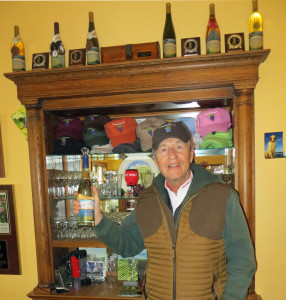
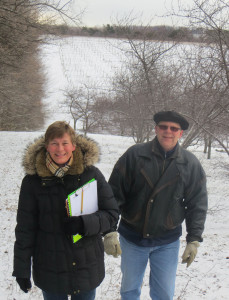
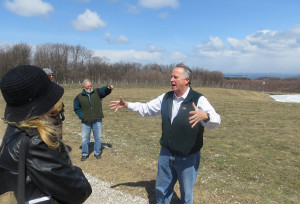
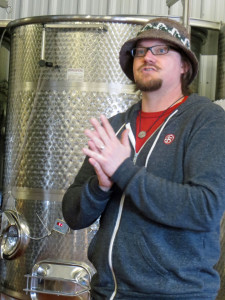

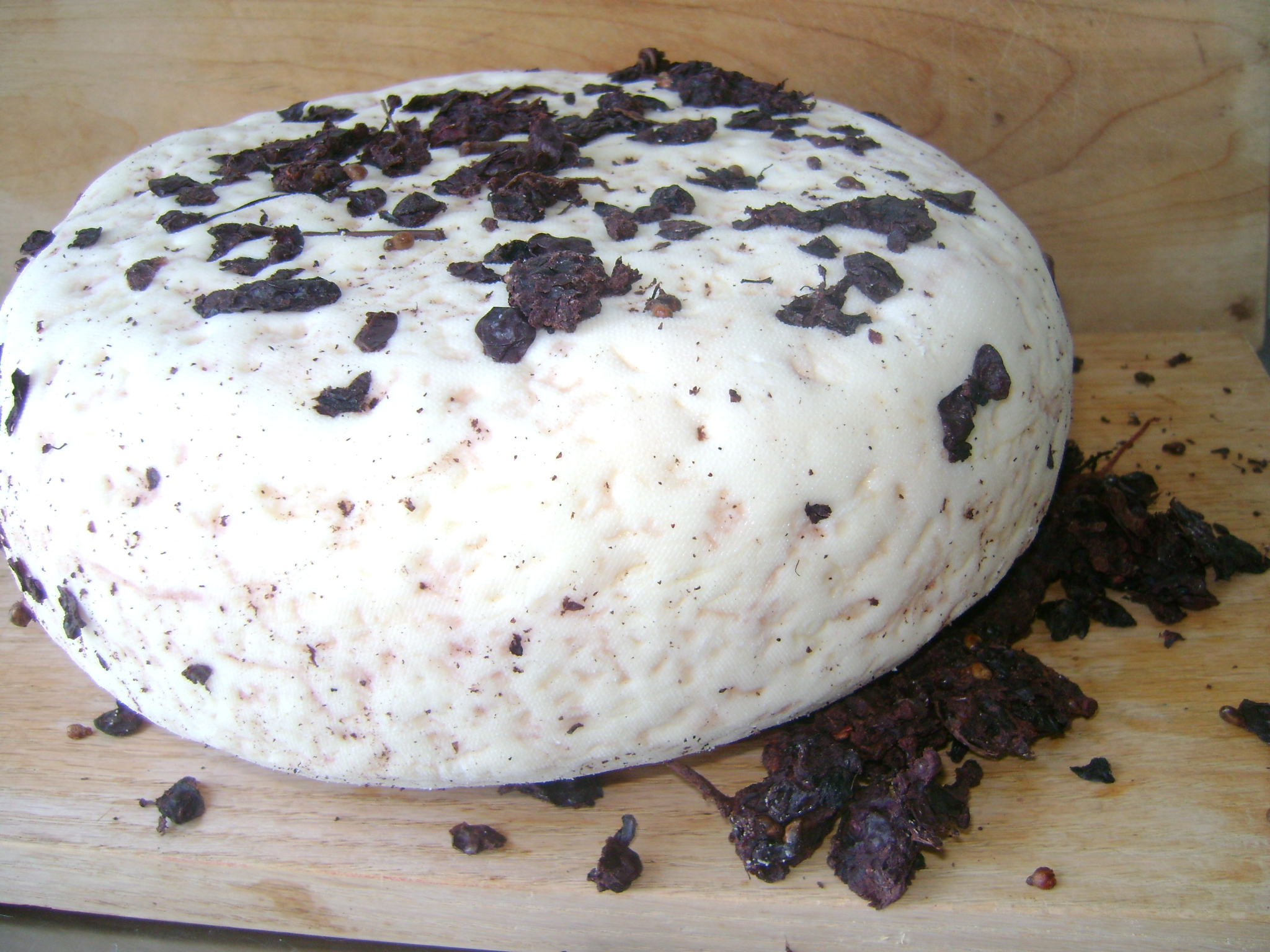
Thank you Mark for the nice writeup about cold climate grape growing…. Susan Braymer, Laurentide
Susan,
Thanks for sharing your story with Midwest Wine Press. You and Bill took considerable risks to uproot yourselves and start a world class winery. And we’re very glad you did! Wine drinkers who have not been “up north” need to experience what’s going on, which includes a visit to Laurentide Winery on the Leelanau Peninsula.
Mark